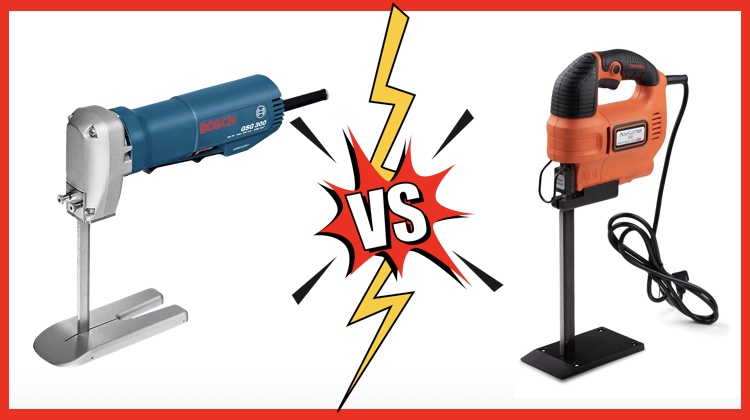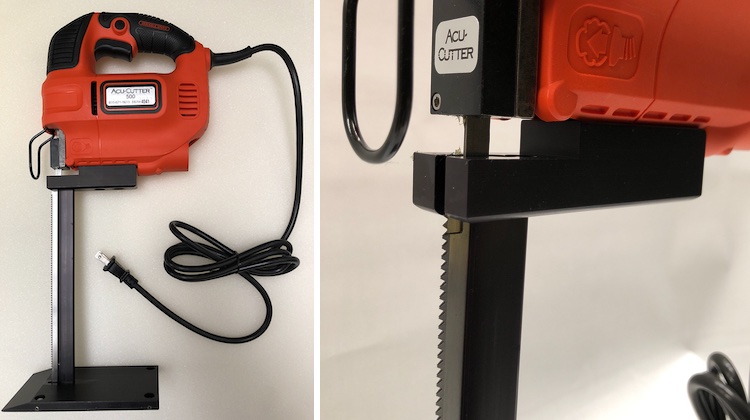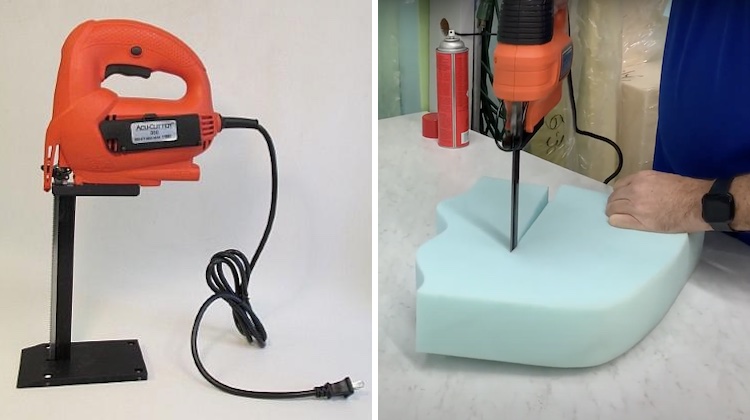
Ever since Bosch discontinued its popular GSG 300 Foam Cutter, auto trimmers have been searching for a dependable alternative. I finally found it in the Acu-Cutter 500.
It’s been 10 years since I purchased my secondhand Bosch foam cutter. Knowing it was discontinued, I dreaded the day it would stop working and I’d need to find a replacement. When that day finally came, I searched high and low for a suitable alternative.
The closest tool I found was the Consew CFC Foam Cutter, which appears to be nearly identical to the Bosch. I had just about come to terms with spending over $600 for it when I came across a Facebook marketplace listing for an Acu-Cutter 500 for only $80, a bargain compared to the retail cost of $420. Even better, when I arrived the seller surprised me by throwing in an Acu-Cutter 350 model for free. More about that later.
The Acu-Cutter 500

The biggest difference between the Bosch and the Acu-Cutter 500 is the jigsaw-style handle of the latter. I really thought I would hate it, and although I do prefer the grip of the Bosch, it wasn’t nearly as cumbersome as I expected.
Aside from the grips, the two tools are pretty similar. Unfortunately, they are both noisy as hell – but I’m quite used to that by now.
Like the Bosch, the Acu-Cutter 500 has two reciprocating blades that cut through foam like butter. The blade guide on the 500 is about twice as wide as the Bosch, making tight turns slightly more difficult. The one thing I greatly prefer about the 500 over the Bosch is the base plate. The larger plate on the 500 balances the saw perfectly, unlike the Bosch that would easily tip over. Also, the wheels on the 500 are a significant improvement over those on the Bosch. The 500 glides effortlessly over any surface.
Acu-Cutter foam saws come with either 4”, 8” or 12” blades. Mine is an 8”, which should handle most of my work. But the 12” blade on my Bosch definitely came in handy when taking off the base plate and using it to carve intricate curved shapes.
The Acu-Cutter 350

As mentioned earlier, Acu-Cutter offers a 350 model in addition to the 500. They both look very similar, but here’s the scoop on the 350.
The seller thought the tool was broken and that’s why he was quick to part ways with it. But after simply replacing the power cord, I was ready to cut foam.
It’s hard to complain about a tool that was given to me for free, but I gotta say I wouldn’t recommend the Acu-Cutter 350 model to any serious shop. The problem with the 350 model is it only has one reciprocating blade, the other is stationary. Because of this it doesn’t cut as well as the 500 series. I’m sure that it’s good enough for a hobbyist or a part-timer, but it couldn’t fulfill the needs of a professional trimmer. So if you’re trying to decide between the 350 and the 500, I’d say spend the extra hundred dollars or so and get the Acu-Cutter 500.
So what’s the verdict?
Is the Acu-Cutter 500 as good as the Bosch Foam Saw?
In my opinion, it’s actually better if you’re keeping the base plate on and cutting foam on the table or the floor. The wheels and larger base plate make cutting larger pieces of foam a breeze. But if you’re taking the plate off as I do to carve shapes on seat bolsters and such, it’s not nearly as agile as the Bosch. The wider blade and bulky handle aren’t very easy to manipulate on 3 dimensional shapes.
So depending on your needs, the Acu-Cutter 500 could be an invaluable tool for your shop.
Recent Comments